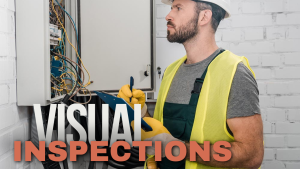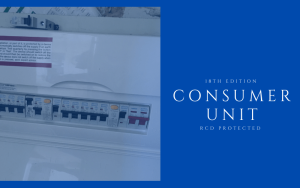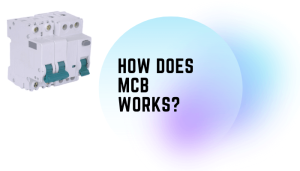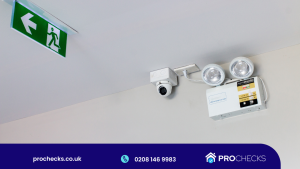An Electrical Installation Condition Report (EICR) is essential when it comes to maintaining the safety and quality of your electrical installations. As an EICR specialist, I understand how important it is for all homeowners and businesses to thoroughly inspect their electrical systems regularly.

In this article, I’ll explain what’s involved in an EICR so you can make sure your property’s wiring system is up-to-date, safe, and reliable, also read this article Do I need an electrical certificate as a landlord
An EICR consists of more than just a visual inspection – it includes detailed testing procedures that involve both measuring readings from the installation itself as well as examining any associated documentation. The results are then used to assess the overall condition of the installation and determine whether or not any further action needs to be taken.
With my expertise, I’m here to help you navigate these processes with ease.
Overview Of An Electrical Installation Condition Report
An Electrical Installation Condition Report (EICR) is an essential tool for ensuring electrical safety standards are being met in a given building or installation. It provides an assessment of the condition of the existing electrical wiring and other components, with any problems identified along with suggested remedial action to ensure that the system complies with current safety regulations.
As a qualified EICR specialist, I have over 10 years of experience surveying, testing, and certifying all types of domestic, commercial, and industrial premises against relevant British Standards – such as BS7671:2018 Requirements for Electrical Installations (17th Edition).
This involves carrying out visual inspections, circuit testing, and completing detailed assessments using specialized test equipment to check insulation resistance readings and earth fault loop impedances, etc., before issuing the resulting certification documents.
The whole process takes into account several elements related to the property’s electrical systems including accessibility, layout, construction type, and age.
My aim is always to identify any potential hazards so they can be rectified quickly; helping protect people from electric shock or fire caused by faulty installations whilst also meeting legal requirements for landlords and homeowners alike.
Visual Inspections

After a thorough evaluation of the general condition, it’s time to move on to visual inspections. This is an important part of any electrical installation condition report (EICR), as any irregularities in wiring or connections must be identified and rectified before they become hazardous.
Take for example the case we encountered recently, where the customer was concerned about whether their wiring was up-to-date with current safety regulations. We began our inspection by closely reviewing all available documentation – such as wiring diagrams, circuit breaker details, and junction box information – to ensure accuracy across all elements of the system.
Then we moved into an actual physical inspection of each component, checking for signs of aging, corrosion or damage that may have occurred over time. We tested every single connection point, from switches and outlets to light fixtures and appliances, looking for evidence of overheating due to incorrect amperage ratings or poor wire insulation.
In some instances this required us to strip away old layers of paint or wallcoverings to get at the underlying wires so that we could check them against manufacturer specifications. Our goal was always twofold: firstly ensuring compliance with all relevant electrical safety standards; secondly identifying opportunities for improvement that would help reduce energy consumption or increase efficiency throughout the home.
Testing The Installation
Testing the installation is a crucial part of any electrical installation condition report. It’s an important process to ensure that all wiring and equipment are in good working order and meet safety requirements.
With this in mind, I use specialized equipment to check for any problems or defects that may prevent electrical safety. This includes testing insulation resistance, earth fault current loop impedance, main protective bonding conductors, RCDs (residual current devices), and more.
I also perform preventative maintenance tests such as polarity checks and testing of circuit breakers to make sure they are operating correctly.
Additionally, I visually inspect each component of the system looking for signs of wear or damage which might potentially lead to unsafe conditions if left unchecked.
Finally, I compile results from my tests into reports that detail any findings with possible recommendations on how best to address them based on the individual case. My aim is always to identify potential issues before they cause harm while helping clients maintain their systems safely over time.
Measuring Readings
Like a conductor’s baton, the electrical installation condition report (EICR) specialist can bring harmony to the circuit of an electrical system.
In this section, we will measure readings and verify that all components are in proper working order for safety and insulation checks.
Firstly, with a digital multimeter or clamp meter, the EICR specialist will test circuits throughout each stage of the installation from new wiring to existing systems. This includes testing for earth leakage current and checking cables for resistance values.
Secondly, tests must be carried out on insulation levels between conductors as well as earthing connections. To ensure these meet legal requirements, it is important for them to pass specific voltage drop tests which our specialists have mastered over years of experience.
Finally, visual inspections must also be conducted including looking at possible signs of wear or degradation caused by heat damage or other factors such as water ingress. By completing these steps acknowledged within industry standards, we can provide assurance that your electrical installation is safe and compliant with regulations.
Examining Documentation
When conducting an electrical installation condition report, it is essential to examine all relevant documentation. This includes any previous EICR reports and safety protocols for the area under inspection. It is important to note that these documents provide evidence of prior maintenance and should be included in the inspector’s findings.
Inspection teams should also verify that the safety protocols are up-to-date and compliant with current regulations. Particular attention needs to be paid to circuit breaker ratings, fuse sizes, residual current devices (RCDs), as well as cable size, type and length.
Documentation must include all testing methodologies used along with readings taken during each test procedure or observation made throughout the assessment process.
Through this thorough examination of existing documentation, an effective EICR can be achieved by ensuring the accuracy of data, confirming the completion of safety checks, and providing a comprehensive record of the inspected area’s condition at the time of review.
By doing so, future inspections can then compare against past results while giving confidence that correct procedures were followed throughout the entire assessment period.
Assessing Overall Condition
The overall condition of an electrical installation is the most crucial element to consider when performing a condition report. To get a clear assessment, it’s important to look at each individual component as well as the system itself. It’s like putting together pieces of a puzzle – if one piece isn’t right, then the entire picture can be thrown off.
I often liken this process to sailing in rough seas – you need to identify any weak points before they become too large for you to navigate around them safely.
Firstly, I always check that all safety protocols are being adhered to and that sound maintenance planning is in place. Then I move on to looking at:
- The integrity of wiring systems
- Visual indications including insulation damage or overheating
- Corrosion or dirt build-up which may affect safe operation
- Earth continuity tests & earth fault loop impedance tests
- RCD testing & polarity checks
- Final circuit protection devices & accessories
Once these criteria have been met, I make sure there aren’t any missing components or non-compliant elements that could cause problems down the line. This helps ensure that your electric installation remains stable and secure over time and also identifies areas where upgrades may be needed in order to meet current safety standards.
By taking all these steps into account during my inspection, I’m able to provide an accurate assessment that will help guide your decisions about how best to maintain your electrical system going forward.
Identifying Hazards
Having assessed the overall condition of an electrical installation, it is now time to identify any potential hazards that may require special attention. This is a crucial step in producing a comprehensive Electrical Installation Condition Report (EICR).
As such, we must be diligent and apply our expertise to uncover anything that might not meet current standards or regulations regarding electrical safety and certificate requirements.
Our approach starts with thoroughly inspecting all accessible parts of the system, from the consumer unit to final circuits. We look for signs of deterioration or damage which can indicate faults and other potentially hazardous issues.
In addition to visual examination, we also use specialist testing equipment to measure resistance levels and ascertain whether further investigation is warranted. Our tests are designed to detect irregularities that could lead to unsafe conditions – even if they cannot be seen at first glance.
We would also examine protective devices such as Residual Current Devices (RCDs) and Circuit Breakers (CBs) for functionality as part of this process. If these components do not operate correctly then there is an increased risk of electric shock or fire occurring due to overloads or short-circuits caused by faulty wiring connections.
The results obtained during this stage will determine what remedial action needs taking in order to bring the property up to acceptable standards according guidelines set out in BS7671:2018 18th Edition Wiring Regulations.
Making Recommendations
As the old saying goes, “An ounce of prevention is worth a pound of cure.” With this in mind, I recommend that all electrical installations be thoroughly inspected and tested to ensure enhanced safety for personnel and property, as well as energy efficiency. My recommendation includes testing for earth continuity, insulation resistance, polarity checks, over-current protection devices, and voltage drop tests among other important factors.
In addition to the standard inspection process set out by the governing bodies in charge, I also suggest additional checks such as visual inspections where possible and qualified opinions on any areas which are not clear or appear outdated.
All recommendations should include detailed costings so that clients can make informed decisions about their electrical installation condition report (EICR).
It is my professional opinion that with proper maintenance and regular inspection, an EICR will provide improved safety levels while reducing energy costs due to more efficient use of electricity within a building or establishment. If these steps are taken then you could expect greater longevity from equipment used; thereby providing even further savings down the road.
Importance Of Regular Checks
Regular electrical installation condition reports (EICRs) are essential for ensuring the safety and compliance of any electrical system. By regularly conducting checks, it is possible to identify potential issues before they become dangerous or costly problems.
Here’s why regular EICR checks should be part of your preventive maintenance plan:
- They help you meet legal requirements – An EICR will ensure that all installations comply with current regulations, allowing you to remain compliant with health and safety standards.
- They improve safety – Regular inspections can reveal defects that can put people at risk such as faulty wiring or incorrect earthing arrangements. Identifying these risks early on helps reduce the chances of an accident occurring in the future.
- They extend the lifespan of equipment – Regularly checking and maintaining equipment reduces wear and tear over time, making sure that systems continue to operate efficiently and safely for longer periods of time.
- They save money – Investing in regular checks can often uncover minor faults before they turn into major ones, helping avoid expensive repairs down the line.
It’s clear then that investing in a comprehensive set of safety protocols and undertaking periodic examinations is worth every penny if you want to keep your home or business safe from electrical hazards!
Benefits Of Professional Inspections
Having regular electrical installation condition reports (eicr) is a crucial part of keeping an environment safe and sound. But why should you engage the services of a professional eicr specialist?
The answer lies in two key advantages: maintaining safety and cost savings.
When it comes to safety, there’s no substitute for having a qualified technician inspect your system. A professionally trained eye can spot potential problems that may not be apparent to untrained individuals – or even those who have been using the same equipment for years. This kind of vigilance helps prevent accidents, injury, damage to property, and other risks associated with faulty wiring or poor maintenance. With proper inspections also comes peace of mind knowing that any issues are caught early on before they escalate into more serious problems.
On top of this is the financial benefit provided by regularly scheduled hours. Although engaging an expert may require some initial investment, the long-term savings will outweigh the costs many times over; after all, catching any faults early on prevents them from becoming major repair jobs down the line. Moreover, during an inspection, a certified technician can make recommendations about how best to improve efficiency which can further help reduce overhead expenses in the future.
Regularly scheduling eicrs with a professional specialist is one of the most effective ways to ensure optimal performance while minimizing risk and safeguarding against costly complications down the road. Investing in such preventive measures pays dividends both now and later on as well as providing invaluable security and reassurance for everyone involved.
Frequently Asked Question
How Often Should An Electrical Installation Condition Report Be Conducted?
It’s essential to conduct an electrical installation condition report (eicr) on a regular basis.
This preventative maintenance and risk assessment should be done at least every five years, or sooner if the wiring is older than 25 years.
A qualified electrician can help you determine whether your property needs to have an eicr conducted more frequently due to any changes in its usage or occupancy.
It’s important to ensure your safety and that of those around you by having this inspection performed regularly so that potential problems can be identified and addressed before they become dangerous.
How Much Does An Electrical Installation Condition Report Cost?
When it comes to cost, getting a professional electrical installation condition report (eicr) done is an investment in safety and peace of mind. Depending on your property and the size of the job, costs can vary widely; however, a typical eicr will range from £100-£500.
If you’re not sure what you need or want some advice about which type of inspection would be best for your particular situation, don’t hesitate to seek out professional help – it’s essential that all safety standards are met when dealing with electricity.
What Is The Difference Between An Electrical Installation Condition Report And Pat Testing?
An Electrical Installation Condition Report (EICR) and PAT Testing are both important aspects of electrical safety, but there is a big difference between them.
EICR tests the installation as a whole to ensure it meets current safety standards, whereas PAT testing only checks the portable appliances for damage or defects that could be dangerous.
While both are essential in ensuring continued electrical safety, an EICR provides a much more comprehensive overview of your entire electrical system and can help you identify any potential risks before they become an issue.
How Long Does An Electrical Installation Condition Report Take To Complete?
Ah, the age-old question: how long does an electrical installation condition report take to complete?
Well, I’m sure you’ve heard it said that time is money – and when it comes to EICRs, nothing could be more true!
As a specialist in this area of safety standards and test requirements, let me tell ya – these reports are no joke.
Depending on the size or complexity of your building’s electrical system, completing one can easily take up half a day (or even longer).
So don’t delay if you want to make sure your property meets all the necessary regulations.
Get started today with an electrical installation condition report from a qualified professional!
How Can I Ensure My Electrical Installation Is Safe?
Ensuring your electrical installation is safe requires taking the right steps. As an experienced Electrical Installation Condition Report (EICR) specialist, I recommend regular inspections of all wiring, appliances and accessories to identify any issues that could potentially cause harm or disruption.
Additionally, following safe practices by using appropriately rated equipment for the job at hand and making sure you switch off power before working on anything can help keep everyone safe from potential accidents.
Investing in a professional EICR will give you peace of mind knowing that your electrical system has been thoroughly checked for safety.
Conclusion
An Electrical Installation Condition Report is a vital part of any electrical installation. Not only does it ensure safety for users, but also provides peace of mind that the system is up to date and in compliance with current regulations.
It’s important that these reports are conducted regularly by certified professionals who understand all aspects of electrical installations and can spot potential problems quickly. By having an EICR completed at least every five years you can have confidence that your electrical systems are safe and compliant – giving you the assurance that comes from knowing your property has been checked thoroughly.
Ultimately, this form of preventative maintenance will save time and money in the long run – not to mention ensuring everyone’s safety!
As an experienced electrician, I strongly suggest getting an EICR done when required; it’s worth its weight in gold as far as protecting both people and properties go.










